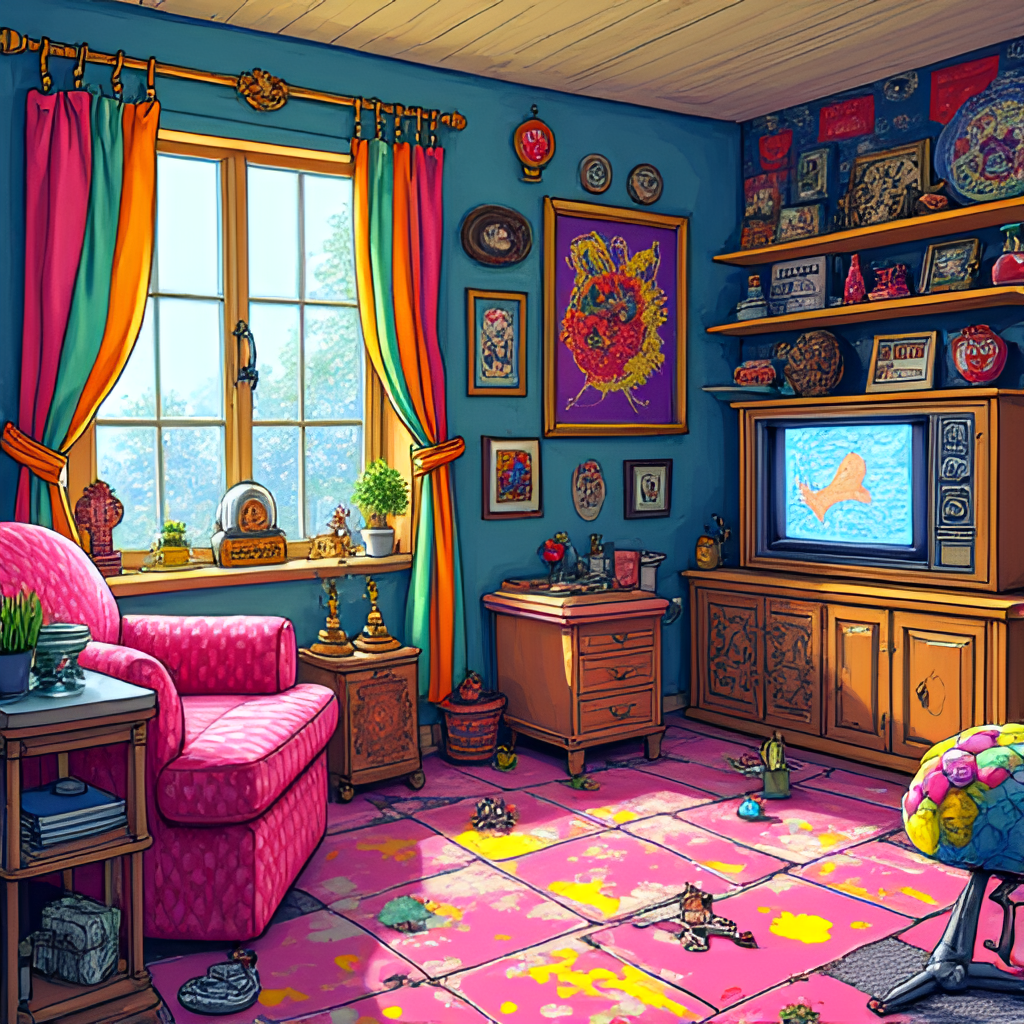Malo Gusto: Navigating the Complex World of Bad Taste
- Introduction: What Exactly is Malo Gusto?
- Taste is Subjective, Right? The Paradox of Malo Gusto
- Beyond Just “Bad”: Exploring Kitsch, Tacky Aesthetics, and Questionable Style
- Why Do We Care About Malo Gusto Anyway?
- Personal Reflections on Encountering Bad Taste
- Conclusion: Embracing or Avoiding Malo Gusto
Malo gusto, an Italian phrase meaning “bad taste,” immediately brings to mind images or ideas that just… don’t quite work, at least not for everyone. Having spent years observing trends, from high fashion runways to quirky home decor, I’ve often found myself pondering the elusive nature of what constitutes bad taste. It’s a topic that sparks strong opinions and lively debates, isn’t it? We all seem to have an innate sense of what we like and dislike, but defining “bad taste” universally? That’s where things get wonderfully, frustratingly complicated. In this article, we’ll dive deep into the concept of malo gusto, exploring its subjectivity, its manifestations, and why it continues to fascinate and sometimes appall us.
Taste is Subjective, Right? The Paradox of Malo Gusto
One of the first things that strikes me when thinking about malo gusto is the inherent paradox. On the one hand, we often hear the adage, “taste is subjective.” And in many ways, that’s absolutely true. What one person finds beautiful or appealing, another might find garish or offensive. Our preferences in food, music, art, and even clothing are shaped by a complex mix of genetics, cultural background, personal experiences, and even how much attention we’ve paid to developing a “trained palate” or eye. For instance, I remember visiting a friend’s house years ago and being genuinely bewildered by their decor – a wild mix of clashing patterns, neon colors, and what I privately considered decidedly tacky aesthetics. Yet, they absolutely loved it and felt completely at home. Who was I to say their taste was objectively “bad”?
However, if taste were *purely* subjective, why do we have such strong, often shared, reactions to certain things? Why do certain styles, objects, or even behaviors elicit widespread eye-rolls or declarations of “that’s in poor taste”? There seems to be a collective, albeit often unspoken, understanding of certain aesthetic missteps. This is where the paradox lies: taste feels deeply personal, yet we constantly make judgments, both silently and aloud, about the taste of others.
Beyond Just “Bad”: Exploring Kitsch, Tacky Aesthetics, and Questionable Style
When we talk about malo gusto, we’re often venturing into the territories of kitsch and tackiness. While sometimes used interchangeably with poor taste, these terms have their own nuances. Kitsch, in particular, is fascinating. It often involves an over-the-top sentimentality or a self-aware indulgence in what might traditionally be considered low-brow or mass-produced art. Think of those velvet paintings of Elvis, decorative plates with puppies on them, or garden gnomes galore. Kitsch can be earnest and sentimental, or it can be a deliberate, even ironic, aesthetic choice. As someone who occasionally appreciates a bit of quirky charm, I’ve certainly dabbled in items that might be considered kitsch by purists.
Tacky aesthetics, on the other hand, often feel less intentional than kitsch. It’s about a lack of polish, a clashing of elements, or an attempt at glamour that falls short, often due to inexpensive materials or poor execution. We’ve all seen questionable style choices – perhaps overly bright colors combined awkwardly, ill-fitting clothing, or excessive, cheap accessories. These aren’t necessarily aiming for sentimental value or ironic commentary; they simply miss the mark in terms of conventional aesthetic harmony. The line between unique personal style and tacky aesthetics can be incredibly fine, and it often shifts depending on context and cultural trends.

This image is a fictional image generated by GlobalTrendHub.
Why Do We Care About Malo Gusto Anyway?
If taste is subjective, why dedicate so much thought and discussion to malo gusto? Why do we form opinions and sometimes even judge others based on their aesthetic choices? I believe it stems from several factors. Firstly, taste is often intertwined with identity. The things we surround ourselves with, the clothes we wear, the art we appreciate – they all communicate something about who we are or who we aspire to be. Judging someone’s taste can feel like judging a part of *them*. Secondly, discussions about taste, even those labeling something as having poor taste, allow us to navigate and reinforce cultural norms and values. They are a way of defining what is considered acceptable, desirable, or even sophisticated within a particular group or society.
Moreover, understanding malo gusto can actually deepen our appreciation for what is considered “good” taste or compelling aesthetics. By recognizing what doesn’t work, we can better articulate why something *does* work. It’s like understanding dissonance in music helps us appreciate harmony. For me, exploring the boundaries of questionable style has definitely made me more mindful and deliberate in my own aesthetic choices, whether in writing, design, or even choosing a restaurant.
Personal Reflections on Encountering Bad Taste
I’ve had my share of encounters with what I perceived as malo gusto, both personally and professionally. There was the time I helped a friend declutter and discovered a collection of ceramic figurines that can only be described as intensely kitschy. Or the marketing campaign I saw that used jarring color combinations and outdated fonts, resulting in truly tacky aesthetics that detracted from the message. In these moments, my initial reaction is visceral – a slight recoil, perhaps a raised eyebrow. But then comes the reflection. Why does this bother me? What are the underlying aesthetic principles being violated, according to my own (admittedly biased) perspective?
These experiences aren’t about feeling superior; they’re about understanding the diverse ways people express themselves and the fascinating, often arbitrary, rules we create around aesthetics. I’ve learned that what looks like poor taste to me might hold deep sentimental value for someone else, or it might be a deliberate rejection of mainstream norms. Embracing this complexity is part of appreciating the human experience. We don’t all have to like the same things, and thank goodness for that – imagine how boring the world would be!

This image is a fictional image generated by GlobalTrendHub.
Perhaps one of the most interesting aspects of malo gusto is its ability to evolve. What was considered the height of fashion or design in one era might be seen as laughably bad taste in another. Look at trends from the 1980s, for example – shoulder pads, neon colors, and excessive perms. At the time, many of these were mainstream. Now, while some elements have seen a resurgence, others remain firmly in the realm of questionable style for many. This constant flux reminds us that “good” and “bad” taste are not static, objective truths, but rather cultural constructs that are constantly being negotiated and redefined.
Thinking about my own home, I’ve definitely made choices that might be considered bad taste by some. I have a penchant for combining vintage pieces with modern design, and sometimes the mix might lean more towards eclectic chaos than curated harmony. But it reflects my personality and my history, and that, to me, is more important than adhering to some strict, external standard of “good” taste. It’s a reminder that while we can analyze and discuss aesthetics, ultimately, our personal spaces and styles should bring us joy and reflect who we are.
Conclusion: Embracing or Avoiding Malo Gusto
In conclusion, exploring malo gusto is more than just pointing fingers at things we dislike. It’s an opportunity to delve into the complex interplay of subjectivity, culture, identity, and aesthetics. While there might be some generally accepted principles of design and harmony, ultimately, what constitutes malo gusto is deeply personal and culturally influenced. Understanding this can help us be more open-minded about the choices of others and more confident in our own, even if they occasionally veer into the delightfully questionable. So, next time you encounter something that strikes you as having bad taste, take a moment to consider *why* you feel that way. You might just learn something interesting about yourself and the fascinating world of aesthetics.